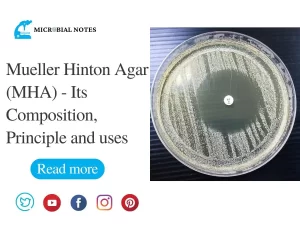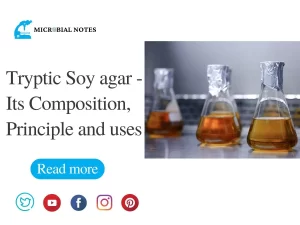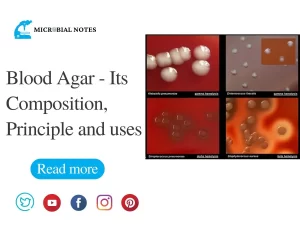Introduction
Xylose Lysine Deoxycholate (XLD) agar is a selective and differential culture medium used in microbiology to isolate and identify bacteria, particularly those belonging to the Enterobacteriaceae family. This medium has a rich history and has been widely employed in various laboratory settings for many years. In this article, we will delve into the intriguing origins of XLD agar, explore its composition and appearance, elucidate its principle of action, discuss the procedure for its utilization, highlight the list of bacteria with their distinctive colony characteristics, explore its applications, and shed light on its limitations.
History of XLD Agar
The development of XLD agar can be traced back to the 1920s, when pioneering microbiologists were striving to create a culture medium capable of selectively isolating and differentiating Salmonella and Shigella species from other enteric bacteria. Dr. Wallace and Dr. Dick, two eminent researchers, played crucial roles in formulating the foundation of XLD agar. Their meticulous experiments and innovative approach led to the discovery of a medium that revolutionized the field of microbiology.
Composition of XLD Agar
- Peptones: Peptones are enzymatic digests of proteins and provide a source of nitrogen and essential amino acids necessary for bacterial growth.
- Yeast extract: Yeast extract contains a broad range of nutrients, such as vitamins, minerals, and amino acids, that support bacterial growth and metabolism.
- Xylose: Xylose is a sugar that serves as the sole source of carbon in XLD agar. It is particularly important for differentiating certain bacteria based on their ability to ferment xylose.
- Lactose and sucrose: These sugars are included in XLD agar to enable differentiation between lactose-fermenting and non-lactose-fermenting bacteria.
- Sodium thiosulfate: Sodium thiosulfate is an important component that helps in the detection of hydrogen sulfide (H2S) production by certain bacteria. It reacts with H2S to form a black precipitate.
- Sodium deoxycholate: Sodium deoxycholate is a bile salt that inhibits the growth of Gram-positive bacteria and allows for the selection of Gram-negative bacteria.
- Ferric ammonium citrate: Ferric ammonium citrate acts as an indicator for hydrogen sulfide production, resulting in the formation of colonies with a black center.
- Phenol red: Phenol red is a pH indicator that changes color depending on the acidity or alkalinity of the medium, aiding in the differentiation of bacteria.
- Agar: Agar is a gelatinous substance derived from seaweed that provides a solid surface for bacterial growth.
| Ingredients | Quantity |
| Lactose | 7.5 gm |
| Sucrose | 7.5 gm |
| Sodium Thiosulfate | 6.8 gm |
| L-Lysine | 5.0 gm |
| Sodium Chloride | 5.0 gm |
| Xylose | 3.75 gm |
| Yeast Extract | 3.0 gm |
| Sodium Deoxycholate | 2.5 gm |
| Ferric Ammonium Citrate | 0.8 gm |
| Phenol Red | 0.08 gm |
| Agar | 15.0 gm |
The appearance of XLD Agar
XLD agar is typically prepared as a transparent reddish medium in a petri dish. The presence of phenol red imparts a reddish color to the agar, while the addition of ferric ammonium citrate contributes to the formation of black colonies or black centers within colonies. The surface of the agar appears smooth and slightly glistening, allowing for the observation and characterization of bacterial growth.
Principle of XLD Agar
XLD Agar is an essential tool for the isolation and identification of specific bacteria, especially those belonging to the Enterobacteriaceae family.
Yeast extract is included in XLD Agar as a nutrient and vitamin source, providing essential growth factors for bacterial cultivation. This promotes the growth of target organisms while ensuring their nutritional requirements are met.
Sodium deoxycholate acts as the selective agent in XLD Agar, inhibiting the growth of gram-positive bacteria. This selective property is particularly crucial as it prevents the interference of non-enteric bacteria, allowing for the isolation and identification of enteric pathogens.
Xylose, another key component, serves as a differential sugar in XLD Agar. Most enteric bacteria can ferment xylose, with the exception of Shigella species. This property enables the differentiation of Shigella from other enteric pathogens. Shigella does not ferment xylose, resulting in no acid production and no color change in the medium.
Lysine, incorporated into the medium, plays a significant role in distinguishing the Salmonella group from non-pathogenic bacteria. Without lysine, Salmonella would rapidly ferment xylose and exhibit similar characteristics to non-pathogenic species. However, with the presence of lysine, Salmonella utilizes the enzyme lysine decarboxylase to break the lysine molecule, resulting in alkaline pH and distinguishing it from non-pathogens.
To prevent similar results by lysine-positive coliforms, lactose and sucrose are added to XLD Agar. The degradation of xylose, lactose, and sucrose by bacteria produces excess acid, causing a change in the pH indicator phenol red to a yellow color. The presence of a red coloration around colonies indicates the decarboxylation of lysine to cadaverine and an increase in pH.
XLD Agar also includes an H2S indicator system consisting of sodium thiosulfate and ferric ammonium citrate. This system allows the visualization of hydrogen sulfide production by bacteria. Bacterial colonies that produce H2S exhibit black centers due to the formation of ferrous sulfide. Non-pathogenic H2S producers that do not decarboxylate lysine prevent the blackening of colonies through their acid reactions, which occur at neutral or alkaline pH.

Procedure for preparing media
To utilize XLD agar, the following steps are generally followed:
- Weigh 55 grams of dehydrated media ( It may vary depending upon the manufacturer’s Instructions). Dissolve in 1L of distilled water and mix it completely.
- Heat it continuously until it boils. DO NOT AUTOCLAVE IT
- Wait for it to cool down until 45 to 50 C
- Then pour them into Petri dishes and let them solidify ( Do not stor it for long time )
List of Bacteria with Colony Characteristics
The following table provides a list of bacteria commonly encountered on XLD agar and their corresponding colony characteristics:
| Bacteria | Colony Characteristics |
| Salmonella spp. | Red colonies, black center |
| Shigella spp. | Red Colonies |
| Escherichia coli | Large Flat, Yellow colonies, no black center |
| Proteus spp. | Swarming growth, Yellow colonies |
| Citrobacter spp. | Red colonies, no black center |
| Enterobacter spp. | Mucoid, yellow colonies, black center |
| Pseudomonas aeroginosa | Rough, Flat, Pink colonies |
Applications of XLD Agar
XLD agar find wide applications in microbiology laboratories for the isolation and identification of enteric pathogens.
XLD agar is particularly valuable in the identification of Salmonella and Shigella species, which are significant causative agents of gastrointestinal infections.
Limitations of XLD Agar
- It is not suitable for the isolation of all enteric bacteria, as some organisms may not grow well or exhibit typical characteristics on this medium.
- The interpretation of results can be challenging, as variations in colony characteristics may occur due to the presence of atypical strains.
- Long-time incubation may give false positive results
- Proteus and pseudomonas species may give red colonies (false positive Results)
Conclusion
Xylose Lysine Deoxycholate (XLD) agar is a versatile medium that has played a pivotal role in the isolation and identification of enteric bacteria for many decades. Its unique composition and selective properties allow for the growth of target organisms while inhibiting the growth of interfering bacteria. The differential characteristics of XLD agar facilitate the differentiation and identification of various enteric pathogens based on their ability to ferment specific sugars and produce distinct colony colors. Despite its limitations, XLD agar remains an indispensable tool in the field of microbiology, aiding in the diagnosis and control of enteric infections.
References:
- https://en.wikipedia.org/wiki/XLD_agar
- Atlas, R. M. (2010). Handbook of Microbiological Media. CRC Press.
- Procop, G. W., Church, D. L., & Koneman, E. W. (2020). Koneman’s Color Atlas and Textbook of Diagnostic Microbiology. Jones & Bartlett Learning.







